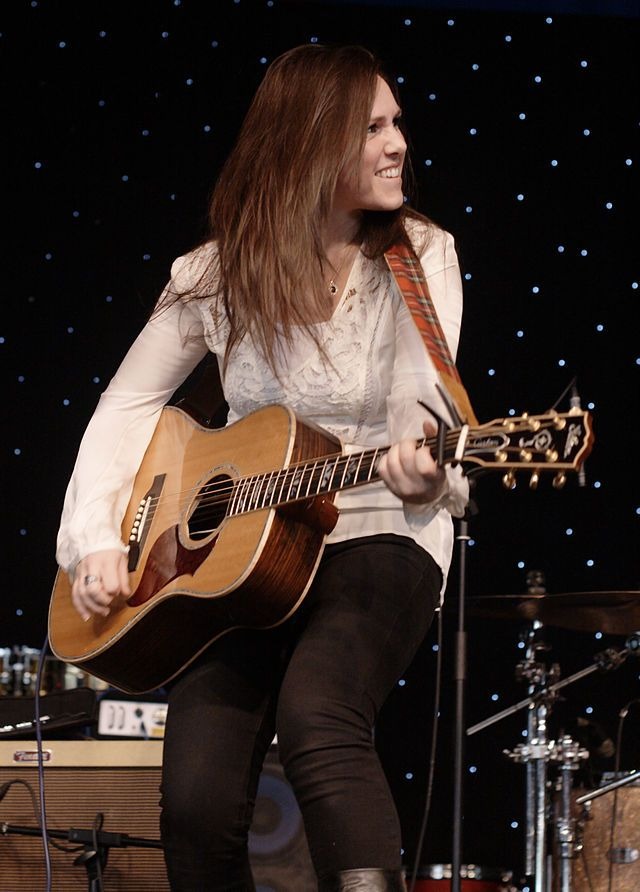The Hidden Renaissance

By VennerRoad, 2nd Oct 2014
An exploration of the renaissance no one seems to have noticed.

Sandi Thom – vanguard of the Hidden Renaissance
The Renaissance was a period of unparalled excellence in especially the arts, at least that is what historians would have us believe. Happily, they are wrong, because there is another, hidden renaissance, one to which most people don’t give a second thought, that is because it is the one that is staring at you from the other side of your keyboard, or even being carried around in your pocket, for those of you who do everything mobile.
During the historical Renaissance, art, literature and music were dominated by the few, that was because they were expensive pastimes, and only the independently wealthy or those patronised by nobility and royalty could afford to pursue the dream. For example, the lutenist and composer John Dowland enjoyed royal patronage in France, Denmark, and then England.
With the rise of both the merchant and the middle class followed by the development of cheap technology, doors began to open for more and more people. Although photography can truly be said to have begun only with the development of the daguerreotype in 1839, it was already a popular pastime well before the turn of the century.
The 20th Century saw the rise of popular music with the development of the gramophone, then there was the moving image. Right from the early days, it was relatively cheap to record music; Big Bill Broonzy cut House Rent Stomp in 1927; although he would go on to win international fame, at that time he was a working class black man from the Deep South.
Films were not cheap to produce though, and for decades they were with few exceptions the bailiwick of big studios. The rise of television did little to broaden the franchise, but as music consolidated its position, composers, songwriters and performers began to earn more rewards from recording and royalties than from their previous nomadic lifestyles. The emergence of rock ’n’ roll merging in the 1960s with hard rock, heavy metal, progressive, singer-songwriters and the various black genres – soul, etc – led to what will be seen by future generations as a golden age of music. Golden age it was too for the men and women who created it; from about Beatlemania to maybe the early 1990s, rock musicians especially lived like kings, and the music they produced has and will continue to stand the test of time.
England especially but also Ireland and to some extent both Canada and Australia joined the United States as the major producers of music for the masses and especially for the young. Meanwhile, film and art plodded on. Then something amazing happened.
From the 1990s, desktop computers were appearing big time in homes worldwide, then the Internet arrived, and most especially the power of machines increased exponentially. For those who don’t appreciate just how staggering this increase in power has become, here is a classic snippet of information from New Scientist, April 18, 1992: “IN THE 1950s, an electronic circuit that could store a single ‘bit’ of information cost more than £1. Today, a penny will buy 5000 of them.”
Now take that and compound it. In 1992, an old-fashioned floppy disk would cost around £1 and hold less than a megabyte of data. Unless you are of a certain vintage, you may find that statement difficult to believe as you walk around with a 32 gigabyte memory stick on your keyring. The explosion of computing power and just as importantly its plummeting price – including free social media accounts – has made it practicable for ordinary working people not simply to go on-line but to produce and either market or more often give away their own art. And they have done so in their millions. This has affected all forms of art.
Even as late as the 1970s, publishing a book was an expensive proposition, now cheap digital technology enables short affordable print runs, or alternatively you can convert your work to PDF then either upload it to a website or e-mail it to your (prospective) audience.
In the 1970s, rock bands would spend vast sums on their pet projects; Pink Floyd spent over a million and a half dollars staging their tour for The Wall. After their monster album Rumours, Fleetwood Mac spent a million dollars on their double album, Tusk. Now the short but spectacular vinyl era has gone, so has all the big production that went with it. That’s the downside; the upside is that now almost anyone can make it big in the music business. With a bit of luck. Both Sandi Thom and the Arctic Monkeys started their careers on the Internet, Thom with a series of webcasts from her basement. All over the UK, the US and the world, musicians from the very young to the venerable are doing the same.
Plays and films seemingly professionally scripted, some by teenagers and even younger kids can be found in abundance. Collections of videos from the zany to the bizarre and all manner of weird stuff is now being produced. Cartoons, animation and experimental art forms that go over most people’s heads are now being produced in droves and uploaded to YouTube, Vimeo and other social networks. And for those for whom art is pretentious, there are blogs through which to inform and proselytise the public or simply rant at the world.
Okay, some of the stuff produced is mediocre, but most of it is at least passable, and some of it is extremely good. The big difference between the Hidden Renaissance and the original Renaissance is not simply that the Web has levelled the playing field but that it has democratised almost the entire world. If you have an Internet connection, you can deliver your art to the world. Okay, the world may not be ready for you yet, or it may not want you period, but future generations will look back on the first quarter century of the WorldWideWeb and see what we see now when we look back on the Renaissance proper, an unparalleled flourishing of art, learning and creativity, but one in which the entire world took part. And your great-great-great-grandchildren will be rightly proud that you were a part of it.
To Wikinut Articles Page
